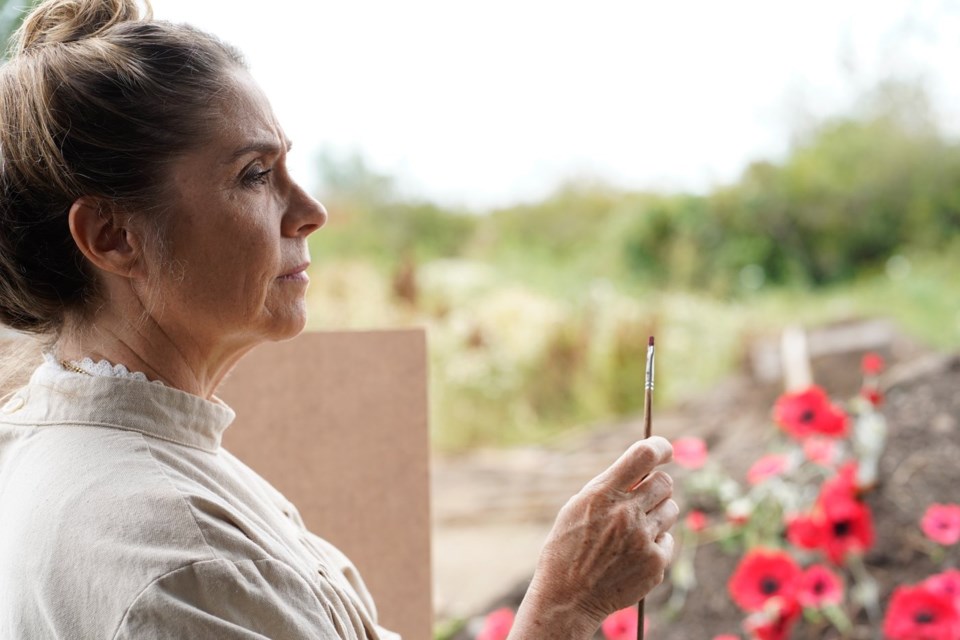A new Heritage Minute honouring battlefield artist Mary Riter Hamilton serves as a reminder to Canadians that ŌĆ£things can get betterŌĆØ in uncertain times, says the head of the non-profit behind the series, who notes a recent surge in Gen Z viewership.
Produced by Historica sa╣·╝╩┤½├Į, Heritage Minutes are 60-second shorts that tell the stories of pivotal people and events in Canadian history.
The latest video, which launched Tuesday to mark Remembrance Day, spotlights the cultural contributions of Hamilton, a Canadian painter who captured powerful imagery from the aftermath of the First World War.
"In some ways, she is the first woman war correspondent, even though she wasn't there when shots were being fired," said Anthony Wilson-Smith, Historica sa╣·╝╩┤½├Į's president and CEO.
The Teeswater, Ont.-born Hamilton was first denied a job as a commissioned war artist due to her gender, but independently travelled to Western European battlefields shortly after the war's end.
There she created more than 350 paintings that documented the devastation of war, and while doing so, she braved unexploded mines, disease and other hazards.
"Very few people at that point were painting as graphically as she did about the horrors of war. There was still a bit of a notion before the soldiers came home that war was this grand operation, that everything was great about it, and the victors told the stories," said Wilson-Smith.
"She really showed you the despair, the suffering, the implied dangers of it all. So (she's) very relevant today and a great Canadian who deserves to be remembered."
Megan Follows, the star of the CBC's 1980s "Anne of Green Gables" series, plays Hamilton in the Heritage Minute, with narration by journalist Lyse Doucet.
Historians say Hamilton declined many offers to sell her paintings, choosing instead to donate some to war veterans and about 227 of them to the National Archives.
The artist died in poverty and relative obscurity at a mental hospital in Coquitlam, sa╣·╝╩┤½├Į, in 1954.
Though she's been overlooked for decades, Hamilton has been having a "renaissance" over the last five years, Wilson-Smith said. Her work was featured on a sa╣·╝╩┤½├Į Post stamp in 2018 and some of her pieces are currently on display at the Canadian War Museum as part of a special exhibition on women artists and war.
"The world is in a very dark and uncertain place," Wilson-Smith said, referencing a myriad of issues from inflation to the conflicts in the Middle East and in Russia and Ukraine.
"(Hamilton's work) looks back at a period where we were coming out of a really uncertain time and came out in a good and ultimately uplifting way. So it reminds us, even though her pictures can be very dark, that things can get better as well."
Heritage Minutes debuted in 1991 and aired frequently during television commercial breaks, in part because regulators counted them as 90 seconds of Canadian content, Wilson-Smith said.
Dramatizing topics that range from basketball inventor Dr. James Naismith to the Underground Railroad, these segments are a memorable part of the TV-viewing experience for millennials and older generations.
But Wilson-Smith said Heritage Minutes continue to reach new audiences, with the 18-25-year-old demographic representing the largest group of viewers over the last few years.
He attributed this trend partly to Gen Z's online presence, as well as the way the short format of the clips aligns with their viewing preferences.
"Brevity is a big strength. Attention spans are much shorter these days than they used to be in the pre-Internet era, so 60 seconds is an ideal thing," he said.
Wilson-Smith said Heritage Minutes are shared on every major social media platform, with some paid promotion. He noted theyŌĆÖve especially found success on TikTok, where Historica sa╣·╝╩┤½├ĮŌĆÖs account currently has 171,000 followers.
While Heritage Minutes continue to play on TV "about 68,000-70,000" times a year, he said, digital is now "the big play for us."
This report by The Canadian Press was first published Oct. 29, 2024.
Alex Nino Gheciu, The Canadian Press


